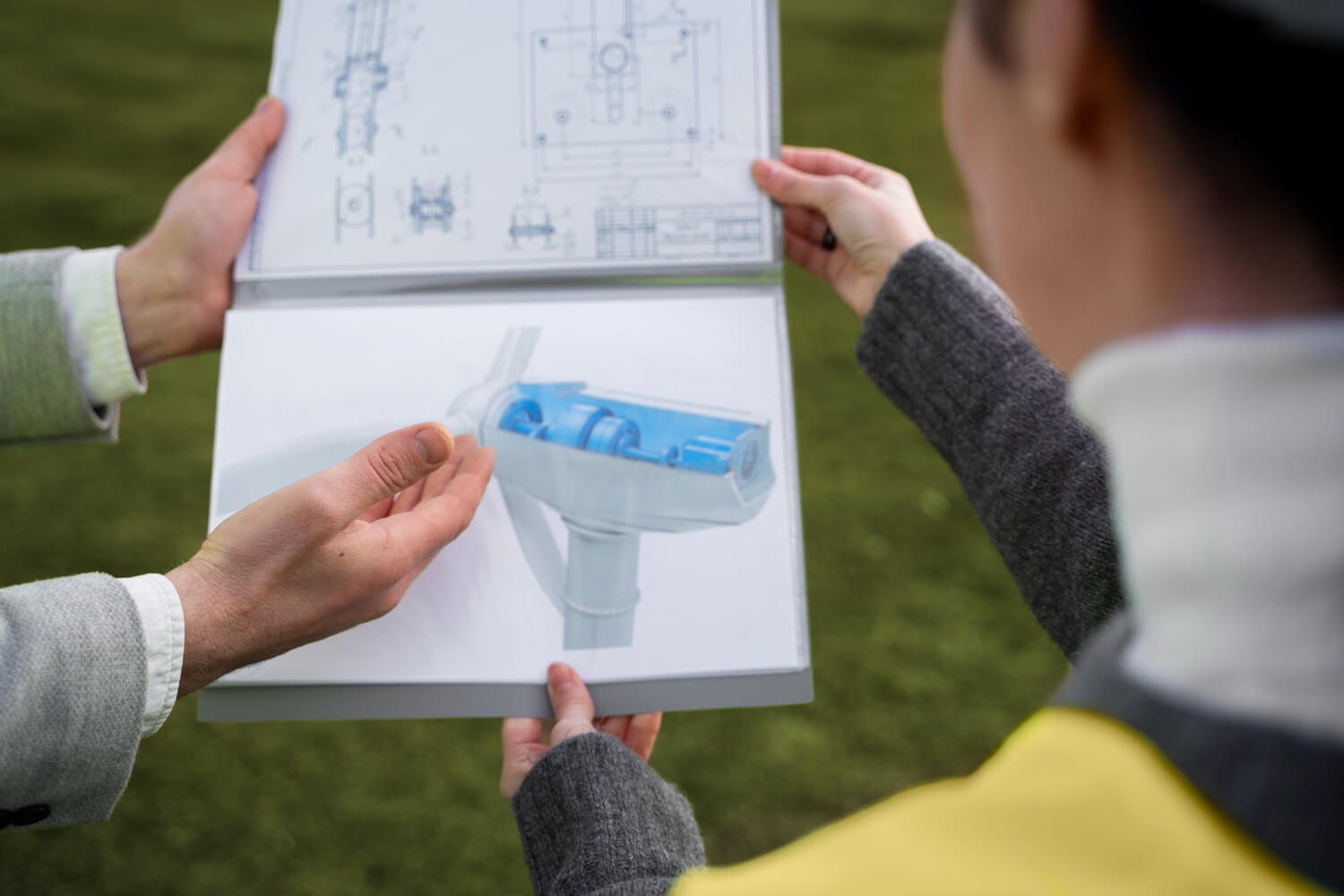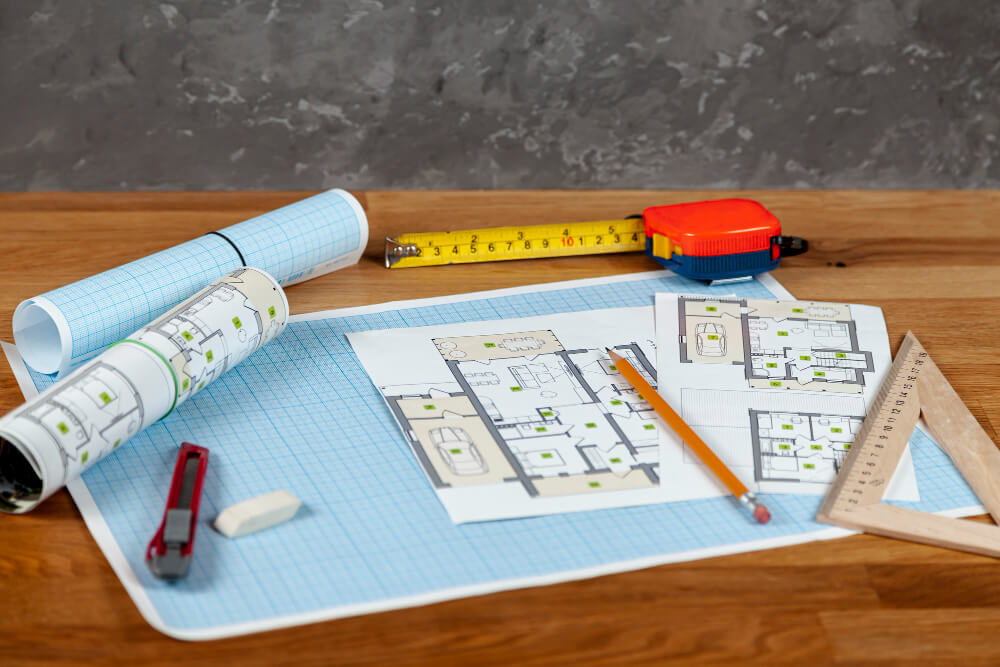The 45-degree rule specifies that any extension to your property’s front, rear, or side must be set within a 45-degree line drawn from the nearest neighbouring window’s edge. It is crucial for making several planning decisions, helping you avoid getting an objection from the local council or neighbours. It plays a significant role in house extension projects in addition to other factors, such as budget, design, and planning regulations.
This guide helps you understand the 45-degree rule, its purpose and importance, and guidelines for using this rule. It also includes other rules for assessing the impact of proposed developments on neighbouring properties and the relation between daylight changes and developmental impacts. You can also get information on applications and uses of this rule, exceptions, when you can get approval and situations when using a 45-degree rule, is not necessary.
45-Degree Rule and Its Purpose
The 45-degree rule is one of the simplest methods to test whether your building project, such as an extension, blocks the light coming to your neighbour’s windows or not. For this purpose, you need to ensure that the extension is built within a 45-degree line drawn from the nearest front or rear-facing windows of your neighbour’s property. This rule requires you to keep those windows in consideration that allow maximum natural light to enter their kitchens or rooms, such as south-facing windows.
Compliance with this rule is necessary so that your proposed extension project does not violate the 45-degree line. Moreover, it is also helpful in getting Planning Permission approval from the local council. It is an easy, quick, and simple method for comprehending if your project compromises the light coming to neighbouring windows. It allows you to construct a structure that is fair, objective, and measurable.

Guidelines for Using the 45-Degree Rule
This rule can be used by drawing a line from the corner or the middle of the closest window of your neighbour’s property to your proposed structure at an angle of 45 degrees. If the line touches the proposed structure, it would likely cast a disagreeable amount of shadow on your neighbour’s house.
This line should be drawn on both floor plans and elevations, making a 2D architectural drawing that shows the building’s outside structure from top to bottom. It provides vertical information about the proposed structure’s height, and you can easily determine if it will create a shadow or block light on the neighbour’s property.
You should take the ground floor window of your neighbour’s property as a reference if you intend to build a single-storey extension. On the other hand, it is recommended in the council’s guidelines to take the window sill’s quarter-point as a reference to determine the impact of a double-storey extension on the neighbouring property. Moreover, if there is no window, then a partial glass or see-through plastic door should be taken as a reference point.
Importance of 45-Degree Rule
In the UK, daylight changes continuously throughout the day and the whole year. For example, the sun rises from the East and sets in the West, being due South around midday, and at its maximum height in noon. In winter, the sun is lower with shorter days, but in summer, it is higher with longer days. Therefore, the government must keep all these changes in mind to determine the impact of the development and construction of new structures.
When these daylight changes are taken into account, the design of the proposed structure can be adjusted to suit the requirements. This will help minimise the impact of new buildings on the amount of daylight received by already constructed properties.

Applications of 45-Degree Rule
The 45-degree rule is only applicable to habitable rooms in which the residents spend most of their time. These rooms include bedrooms, kitchens, living rooms, playrooms, and study rooms. The access of windows to the natural light for these rooms is carefully determined with respect to your proposed structure based on the orientation of windows.
Mostly, this rule is used for terraced houses as there is already no gap between them and neighbours have shared walls. Different councils apply this rule differently based on various factors. The placement rules also differ, such as some councils take the middle part of a neighbour’s window ledge as a reference, while others do it differently. Therefore, you should ask your local area council before applying this rule to your extension project.
Factors Affecting the Application of the 45-Degree Rule
The application of this rule can be affected based on these factors:
- Plot’s size
- Topography
- Building orientation
- Distance from boundary
- Proposed structure’s height
Who Uses the 45-Degree Rule?
Extension architects and planning officers mostly use the 45-degree rule. This rule helps extension architects design an enlarged structure for their client’s properties, ensuring compliance with the associated requirements. Planning officers use this rule to assess whether a proposed extension project is suitable to build. Moreover, this rule is also beneficial for ensuring all development projects are practical and well-managed.

How Does 45-Degree Rule Affects Your Approval?
In some cases, when the 45-degree rule gets breached, the planning officer determines the impact on your neighbouring properties. You can get approval if all the principal windows of the concerned rooms are unaffected and only one is partially impacted. If the proposed development meets the 45-degree rule’s horizontal requirements but fails to meet the vertical ones, then you can still get approval to add an extension to your house.
The amount of a 45-degree line intercepting the proposed structure from the neighbour’s windows is also crucial in the approval process, indicating your consideration for the neighbours. If a small amount of 45-degree line surpasses, then you can get approval as a minimum shadow would be created.
Situations not Requiring 45-Degree Rule
If your extension project falls under the category of Permitted Development Rights, you do not need to consider the 45-degree rule and just focus on the extension’s size. For instance, a 4m and 3m rear extension is allowed for detached houses and other types of homes, respectively, with a height that should not be extended more than 4m.
Other Skylight Indicator Rules
There are other rules in addition to the 45-degree rule, i.e., the 25-degree rule and the 43-degree rule, which are used for analysing the impact of development on surrounding properties. The 25-degree rule involves the analysis of conditions 2m above ground level for a new development which directly faces the already installed windows. According to the experts, it has been recommended that there should be a distance of 10m between facing properties and this rule is not applicable for north-facing windows.
These rules are also referred to as skylight indicators because skylight is present all around us, while sunlight is only present on sunny days. Therefore, the concept of skylight is used to ensure the newly constructed structure does not interrupt the light to neighbouring properties.


